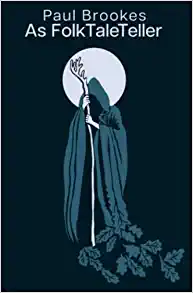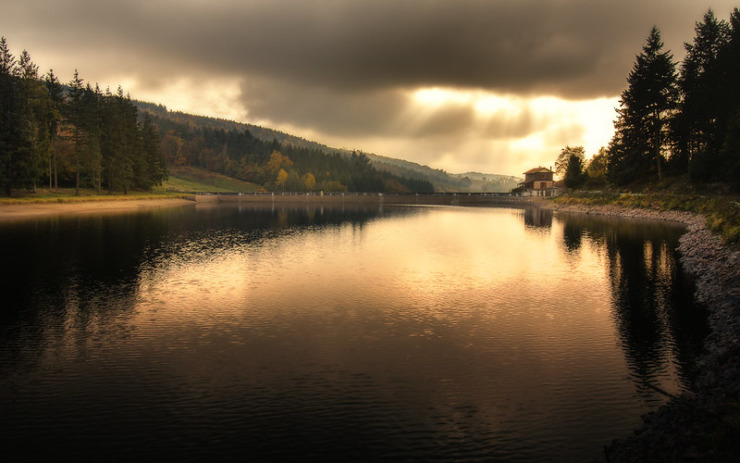Paul Brookes explores the depth of folk tales
In southwestern Missouri near the Oklahoma border, a story is told about the “spooklight” or “ghost light,” a mysterious ball of light seen at night. It’s supposedly best seen from just inside the Oklahoma state line, facing west. Reports of the light began in the 19th century, and some say it’s associated with the Trail of Tears in the 1830s. Similar lights have been reported in Texas, Michigan, Thailand, and Norway. All the reports fall into the general category of “will-o’-the-wisps,” often associated with marshes and swamps.
The will-o’-the-wisp is just one of the folk tales poet Paul Brookes puts to work in his new poetry collection, As FolkTaleTeller, a chapbook of 33 poems, each about a different folk tale or character. The folk tales are local to where Brookes lives in England. But most of them of them are familiar enough under other names to be close to universal, like that ghost light or will-o’-the-wisp.
To My Will-o’-the-Wisp

home, where it’s warm and cosy, a welcome
after bone crunching cold. That leads you askew,
after unsafe ground makes you slip, fall undone.
Succumb to my will-o’-the-wisp, Hope’s way.
This is not quicksand, it is a loving
embrace. This is not a cliff edge but play
of freedom. A step into excitement proving
our Will knows how you can be the best
you can be. Lights in the dark are homely,
comfort when all around is danger’s test.
Let our lights take you in. Don’t be lonely.
Please, please, please let us lead your weary way.
Our aim in life is to lead you astray.
The poem is like a story your parents tell you to keep you away from the swamp or dark woods, but you’ll reach an age when the call of the wisp is almost irresistible.

Paul Brookes
Brookes takes us on a mini tour of north central England. We meet the Green Man, the Erl-King, Ginny Greenteeth, the Owlman, the standing stone, a Jabberwock, a hobgoblin, a sin eater, an imp from Lincoln, a dragon, a kelpie, and more. They tell their stories and move on, and you hope you avoid moving on with them. Brookes has a concise way of suggesting both enticement and danger, which is what the folk tale poems are mostly about.
Brookes is a writer, playwright, poet, historian, photographer, genealogist, shop assistant, and grandfather. His poetry collections include The Headpoke and Firewedding (2017), A World Where (2017), and She Needs That Edge (2018). He lives in Wombwell in south Yorkshire, and he manages a website devoted to poetry called The Wombwell Rainbow.
During October, Brookes posted three folklore images a day, asking writers and poets to celebrate his folk tale poems with their own ekphrastic poetry and prose. You can see the results at The Wombwell Rainbow. And if you need a poem or story to warn of possible danger, As FolkTaleTeller offers quite a collection from which to choose.
Related:
Paul Brookes: A Poetry Champion Who Writes Poetry
David Russell Mosley and The Green Man
The Enduring Appeal of Sir Gawain and the Green Knight
Photo by S@drine, Creative Commons, via Flickr. Post by Glynn Young.
How to Read a Poem uses images like the mouse, the hive, the switch (from the Billy Collins poem)—to guide readers into new ways of understanding poems. Anthology included.
“I require all our incoming poetry students—in the MFA I direct—to buy and read this book.”
—Jeanetta Calhoun Mish
- Longfellow’s “Paul Revere’s Ride”: Creating a National Legend - April 17, 2025
- Poets and Poems: Katie Kalisz and “Flu Season” - April 15, 2025
- Poets and Poems: Michelle Ortega and “When You Ask Me, Why Paris?” - April 10, 2025


Leave a Reply